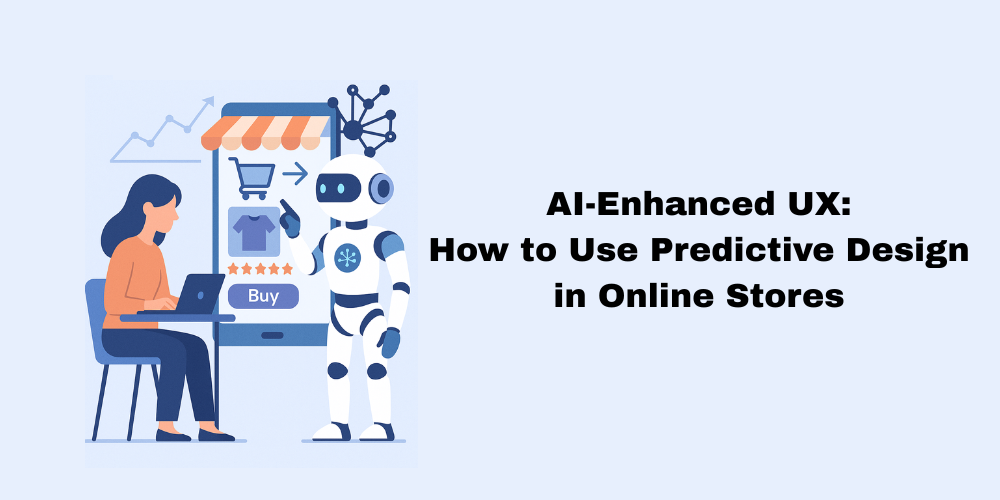The ecommerce industry is evolving faster than ever—and so are the expectations of modern consumers. In an age dominated by convenience and speed, a new trend is making waves: zero-click checkout.
This isn’t just a buzzword. Zero-click (or instant) checkout represents a seismic shift in how users interact with online stores. It minimizes friction, reduces cart abandonment, and maximizes conversions—all within seconds. But with such rapid interactions comes a pressing question: What does this mean for user experience (UX)?
Whether you’re a merchant looking to stay competitive or an ecommerce website design company serving fast-scaling brands, understanding the rise of zero-click commerce is essential. In this article, we’ll explore what it is, how it works, the benefits and drawbacks, and the UX considerations every business should take seriously.
What Is Zero-Click Checkout?
Zero-click checkout refers to a process where customers complete purchases without manually entering information—sometimes with a single tap, and often automatically. It removes traditional barriers like:
Cart pages
Billing and shipping forms
Manual payment inputs
Instead, it leverages stored payment credentials, biometric verification (like Face ID), and smart integrations to complete the transaction instantly.
Key Enablers:
Apple Pay, Google Pay, and Shop Pay
1-Click purchasing systems (e.g., Amazon’s patent)
Buy Now buttons on social media platforms
Embedded checkout within email or SMS campaigns
The result? A checkout process so seamless, it’s almost invisible.
Why Instant Commerce Is Rising Now
1. Customer Expectations
Today’s online shoppers—especially Gen Z and Millennials—crave speed, simplicity, and certainty. In a world where Uber can summon a ride in two taps, why should ecommerce require six steps to check out?
2. Mobile-First Habits
With over 65% of ecommerce traffic coming from mobile, users don’t want to pinch, zoom, or enter lengthy card details on small screens. Zero-click caters to the mobile UX perfectly.
3. Tech Ecosystem Maturity
Thanks to tokenized payments, secure APIs, and biometric authentication, zero-click is now both technically feasible and secure.
This growing trend presents an enormous opportunity for businesses to modernize their storefronts—especially with the help of custom ecommerce web design services that understand the nuances of user experience design.
Benefits of Zero-Click Checkout
1. Reduced Cart Abandonment
Cart abandonment rates average around 70% across industries. Zero-click drastically reduces drop-offs by eliminating delays and cognitive friction.
2. Faster Conversions
A quicker checkout equals a quicker purchase. This is especially important in flash sales, limited-edition drops, and impulse-buy moments.
3. Increased Mobile Revenue
Since mobile shoppers are more prone to bounce, a frictionless path to purchase directly boosts mobile conversion rates.
4. Personalized Experience
Zero-click checkout often ties into saved preferences, enabling more customized and contextual transactions—which Gen Z consumers love.
UX Implications: The Double-Edged Sword
While instant commerce sounds ideal in theory, it raises serious questions around user experience, trust, and design ethics. Here’s what to consider:
1. The Balance Between Speed and Intent
Removing steps also removes the pause where customers typically reflect on what they’re buying. Designers must make sure purchases aren’t so fast that they feel accidental.
UX Tip: Use clear visual confirmation, smart button placement, and undo functionality to balance instant checkout with user confidence.
2. Invisible Interfaces Still Require Trust
When something happens instantly, users may feel out of control. That’s dangerous.
Design best practices:
Display product details right before checkout
Confirm price, shipping, and delivery estimate visibly
Use animations to show each phase (e.g., payment → order confirmed)
Partnering with an ecommerce website design company can help you integrate these elements with clarity and subtlety.
3. Security Messaging
Zero-click relies on saved data. Customers must trust that their information is secure.
Key UX strategies:
Display security badges near buttons
Clarify which payment method is being used
Offer biometric verification if possible
Real-World Examples of Zero-Click Success
1. Shop Pay
Shopify’s Shop Pay offers a zero-click experience with saved credentials, address auto-fill, and one-tap confirmation. It boasts a conversion rate 1.72x higher than standard checkout.
2. Amazon
The original pioneer of 1-click shopping, Amazon patented this model to minimize decision fatigue and maximize spontaneous purchases—especially on mobile.
3. Instagram Checkout
Enables users to purchase products without leaving the app, storing payment info for instant repeat orders.
If you’re building a similar UX, investing in custom ecommerce web design services ensures your design supports both performance and ethical engagement.
Designing for Zero-Click: Best Practices
To implement zero-click or instant checkout effectively, here are some core UX principles to follow:
Keep it Transparent
Always show what’s being purchased, even if the user taps just once. Use modals or expandable drawers to show cart contents briefly before final confirmation.
Prioritize Speed, But Not at the Expense of Clarity
Use micro-interactions and progress indicators to let the customer know what’s happening in real time.
Make it Optional
Zero-click should be an opt-in experience. Let customers choose traditional checkout if they’re more comfortable with it.
Test, Iterate, Repeat
Every audience is different. A/B test button placements, payment options, and interface cues to find the sweet spot between friction and functionality.
An experienced ecommerce website design company can help run tests, gather insights, and adapt designs for optimal performance across devices and demographics.
The Role of Design in Building Trust
Trust is the currency of instant commerce. With less time to reassure the shopper, design must do the heavy lifting.
Consistent branding and layout
Clear return and refund policies visible near checkout
Order confirmations with links to tracking and support
This is where professional design makes all the difference. Brands leveraging custom ecommerce web design services can craft tailored experiences that speed up checkout without sacrificing brand integrity or user peace of mind.
Who Should Embrace Zero-Click Checkout?
Not every business needs to implement instant checkout immediately, but it’s especially impactful for:
DTC brands with repeat buyers
Subscription services
Flash sale or drop-based commerce models
Social commerce storefronts
If you're unsure whether this approach fits your audience, working with an ecommerce website design company can help evaluate your user data and make the right decision.
Final Thoughts: Designing for the Future of Commerce
Zero-click checkout is more than a trend—it’s the future of frictionless ecommerce. It reduces steps, accelerates conversions, and caters to the fast-paced habits of today’s shoppers. But great power comes with great design responsibility.
To implement it successfully, businesses must balance speed, transparency, and trust. This is where strategic design—and the support of skilled professionals offering custom ecommerce web design services—becomes invaluable.
As instant commerce continues to grow, the brands that win will be those who can deliver ultra-fast shopping without making the user feel rushed. Zero-click isn’t about fewer clicks—it’s about better experiences in fewer steps.




Write a comment ...